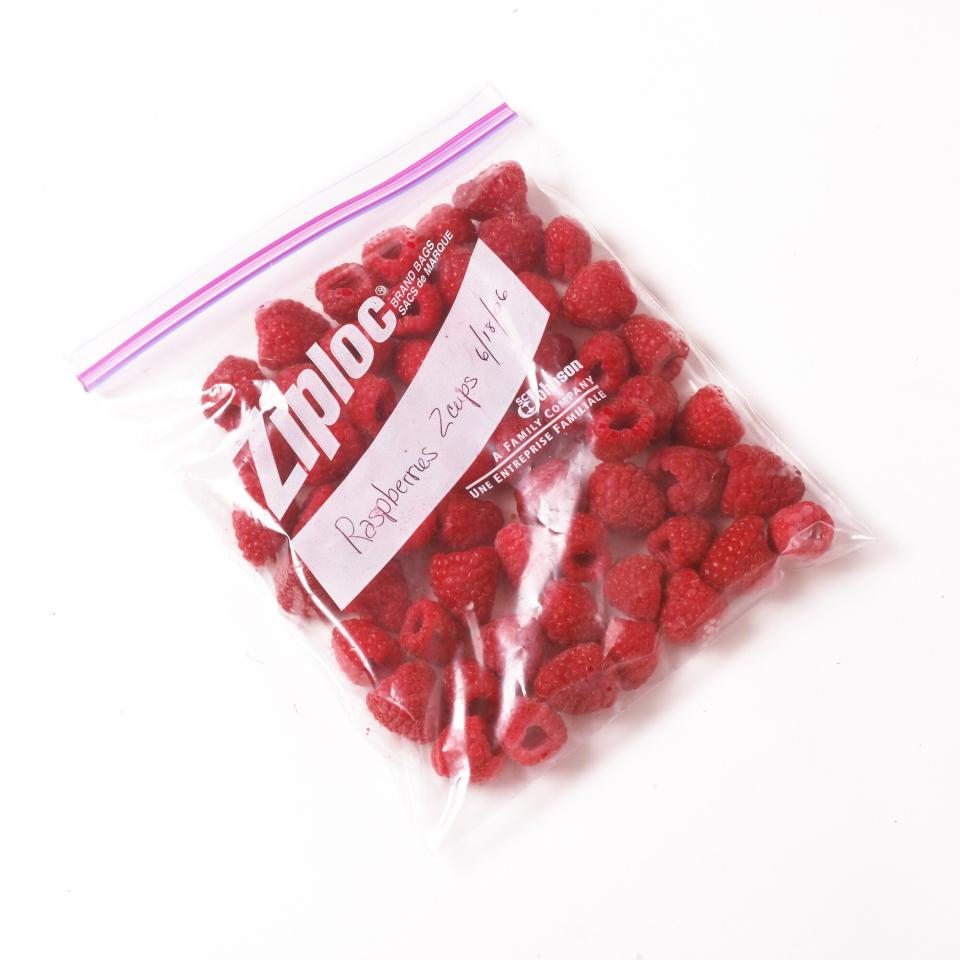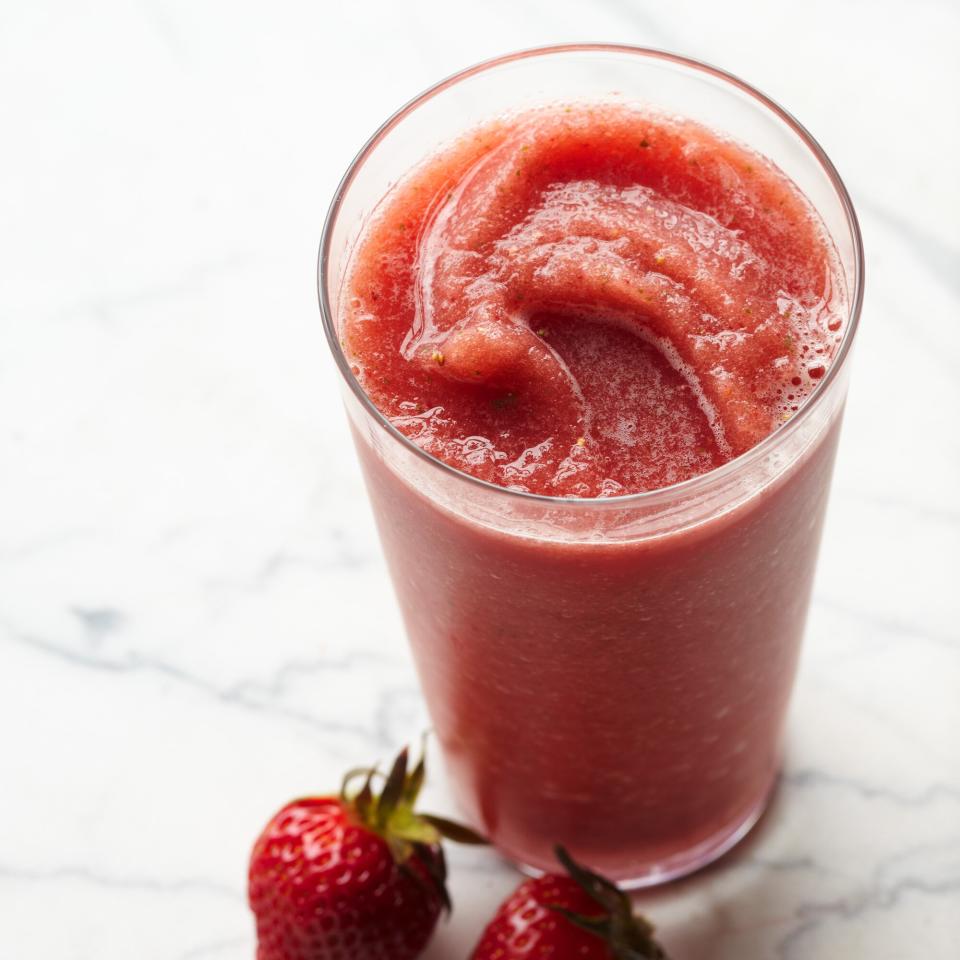Flash Freeze Your Food in 2 Easy Steps for Smoothies, Quick Meals, and More
Sometimes you need just a handful of this or a little bit of that: strawberries for a smoothie, a single hot dog to satisfy a hungry child, or a quick lunch to take to work. By "flash freezing" small or individual portions of food, that individual berry smoothie or slice of cheesecake is ready and waiting in the freezer. So what is flash freezing? In the food industry (and on those fast-paced cooking shows we love to watch), flash freezing (aka blast freezing) refers to freezing foods at extremely low temperatures with cold, circulating air. This quick-chill method keeps ice crystals small, which prevents moisture loss in the food when it thaws. For the home cook, flash freezing refers to the practice of freezing individual pieces of food separately (usually spread out on a baking sheet or tray), then packing the frozen food in airtight containers for longer storage. The first step of this process keeps individual pieces of food from fusing together during freezing. Flash freezing allows the cook to thaw and use just the amount of food needed, rather than thawing larger amounts of the food all at once.
How to Flash Freeze Foods
To get started, you'll need a baking sheet or tray (make sure it fits in your freezer) and freezer-safe containers or resealable bags. Depending on what you are freezing, you may need plastic freezer wrap and/or heavy-duty aluminum foil.

Marty Baldwin
1. Prepare Food for Flash Freezing
Most foods do not need to be washed. You'll always want to wash berries (or any fresh produce) by gently rinsing and patting them dry. If applicable, divide food into small, individual portions or pieces. This can be foods such as shaped individual dinner rolls, individual chicken breasts or chicken breast slices, meatballs, and single servings of cooked meat loaf. Place the food on a baking sheet or tray. Make sure the edges of the food do not touch, as this can cause the pieces to fuse together as they freeze. Freeze 2 to 3 hours, or until firm.
Test Kitchen Tip: For easier cleanup, line the baking sheet or tray with parchment paper, waxed paper, or plastic wrap before adding the food.

Marty Baldwin
2. Seal or Wrap, Label, and Freeze
Remove the food from the baking sheet and either wrap it in plastic freezer wrap or heavy-duty aluminum foil, or transfer it to resealable freezer bags or freezer-safe food-storage containers with tight-fitting lids.
Label the package using a wax crayon or a permanent marker, indicating the name of the item, the quantity or size, and the date it was frozen.
Return the food to the freezer.
Test Kitchen Tip: Do not use foil to wrap foods that contain acidic ingredients, such as tomatoes or lemon juice. Acid reacts with aluminum foil. Instead, use plastic freezer wrap.
Foods That Can Be Flash Frozen
Whether raw or cooked, just about any food that comes in individual pieces (or can be broken or cut into individual pieces) can be flash frozen. The best candidates, however, are those foods that freeze well in general and are particularly useful in smaller portions. Here are some examples:
Fresh berries, such as blueberries, raspberries, and strawberries
Individual portions of meats, such as chicken breast halves, steaks, and hot dogs
Cooked or uncooked hamburger patties, meatballs, and bacon slices
Fish steaks or fillets, shrimp, and scallops
Baked cookies, scones, and muffins
Baked bread slices, rolls, and biscuits
Unbaked bread dough, shaped into rolls
Shaped unbaked cookie dough
Individual slices of cake, fruit pie, or cheesecake
Foods That Should Not Be Flash Frozen
Because they lose flavor, texture, or overall quality when frozen, these foods won't do well flash freezing:
Eggs in shells, whether raw or cooked
Cooked egg whites or yolks
Custard- or cream-based pies or other desserts with cream fillings
Cheese
Battered and fried foods
Stuffed chops or chicken breasts
Fresh fruits and vegetables: Most fresh fruits (with the exception of berries) and vegetables are not suitable for flash freezing. They may be frozen but require specific steps beforehand, such as blanching or packing in water, fruit juice, or syrup.
Soups, stews, and other soft or liquid dishes. (These are freezable, just not an option for flash freezing since they can't stand on their own on a baking sheet.)

Blaine Moats
How Long to Freeze Flash-Frozen Food
According to the USDA, food stored at temperatures of 0°F or below will always be safe to eat. That's because freezing prevents the growth of the microorganisms that cause food-borne illness. However, after time, frozen foods might lose flavor, texture, or overall quality. We recommend sticking within the times suggested here:
Cooked Items
Baked cookies, slices of cake, fruit pies, quick breads, and yeast breads: 3 months
Individual slices of cheesecake: 2 weeks
Cooked meats, such as pork chops, chicken breasts, and meat loaf slices: 3 months
Raw Items
Berries: 1 year
Uncooked ground meat patties: 3 months
Uncooked fish and shellfish: 3 months
Uncooked steaks, chops, and poultry pieces: 3 to 6 months
Unbaked bread and cookie dough: 3 months
When ready, thaw frozen foods in the refrigerator or microwave, never at room temperature (a few exceptions include breads and sweets that can safely be stored at room temperature). With a freezer stocked with ready-to-eat servings, consider going all out and making entire family meals that are freezer-friendly.

